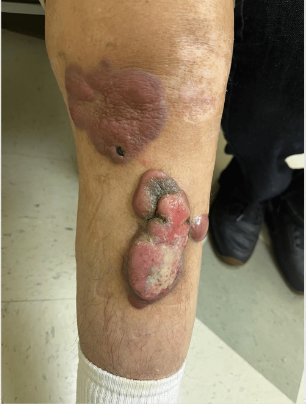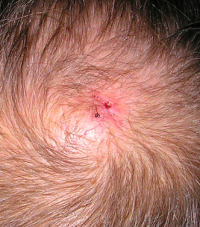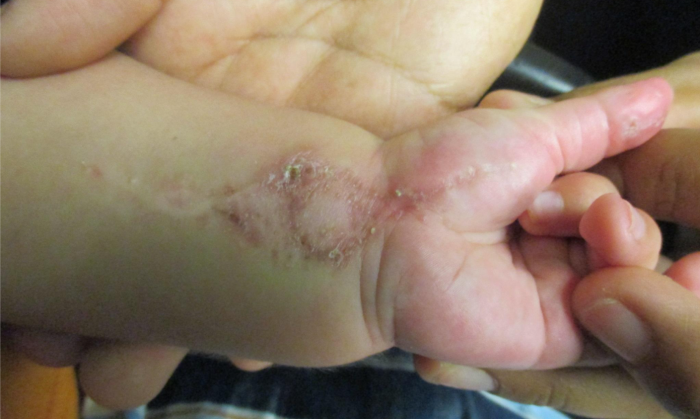CORRECT DIAGNOSIS:
Ichthyosis Hystrix
DISCUSSION:
Ichthyosis Hystrix is a term given to a group of conditions that have porcupine-like spines and hyperkeratotic scales. The group includes Brocq, Lambert, Curth-Macklin, Rheydt, and Bafverstedt types. Ichthyosis Hystrix Curth-Macklin type is a rare disorder with autosomal dominant inheritance, where severe palmoplantar keratoderma can be seen. Sometimes these disorders can be associated with deafness or other neurological deficits. Typically, areas of involvement are the extensor surfaces of the arms and legs, but other sites of the body and scalp may be involved.
Our patient’s presentation is more consistent with the Lambert type due to the presence of the spiny scales, no history of blistering, and sparing of the palm and soles. Also, due to the lack of family history, likely a sporadic type. The group of disorders displays cases that develop from sporadic mutations and in an autosomal dominant inherited fashion, all leading to an alteration in keratin expression in spinous keratinocytes. In a study of 2 families with Ichthyosis Hystrix Curth-Macklin type, a mutation of the KRT1 gene, which encodes keratin 1 has been discovered.
TREATMENT:
Patient was started on Soriatane 10mg daily with topical lactic acid twice a day, that showed substantial improvement. At a six-week follow up appointment, the Soriatane was increased to 17.5mg daily with further clearance of the plaques.
REFERENCES:
1. Nair P, Singhal R, Gandhi S, Diwan N. A sporadic case of ichthyosis hystrix: Curth and macklin type. Indian Dermatology Online Journal. 2017;8(2):139. doi:10.4103/2229-5178.202264.
2. Kubo Y. Ichthyosis Hystrix, Curth-Macklin Type: A New Sporadic Case With a Novel Mutation of Keratin 1. Archives of Dermatology. 2011;147(8):999. doi:10.1001/archdermatol.2011.217
3. Biswas P, De A, Sendur S, Nag F, Saha A, Chatterjee G. A case of ichthyosis hystrix: Unusual manifestation of this rare disease. Indian Journal of Dermatology. 2014;59(1):82. doi:10.4103/0019-5154.123512




